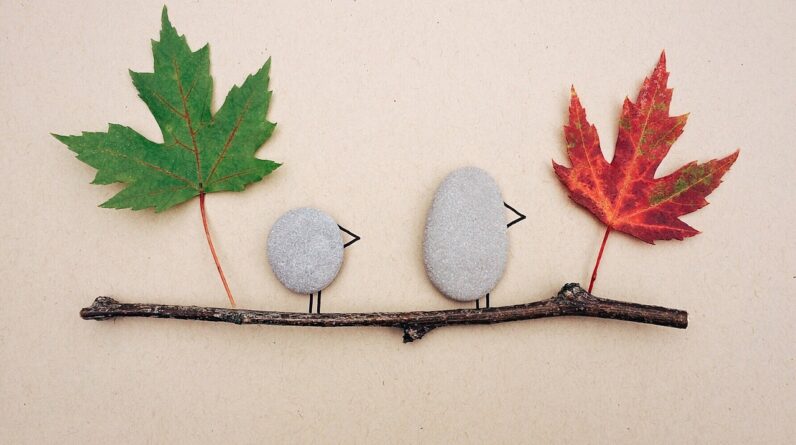
Welcome to “Crafting with Wood: Simple Carpentry Projects”! In this article, we dive into the wonderful world of woodworking, exploring easy and enjoyable carpentry projects that anyone can tackle. Together, we’ll unlock the secrets to creating beautiful, handcrafted wooden pieces that are both functional and decorative. From basic furniture to charming home décor, we’ll guide you step-by-step, sharing tips and tricks to help us all become confident carpenters. Let’s roll up our sleeves and get started on a journey of creativity and craftsmanship!
Have you ever admired a beautifully crafted wooden piece and thought, “I wish I could make that”? Well, we have great news for you! Crafting with wood is not only a rewarding hobby, but it’s also an opportunity to create practical and decorative items that we’ll cherish for years to come. Whether we’re beginners or experienced DIY enthusiasts, there are countless simple carpentry projects that we can dive into.
Why Choose Woodworking?
Engaging in woodworking offers numerous benefits. It’s a fantastic way to express our creativity, reduce stress, and hone our problem-solving skills. Plus, it provides us with the satisfaction of crafting something tangible with our own hands.
Benefits of Woodworking
Woodworking is more than just a hobby; it’s a way to enrich our lives:
- Sense of Accomplishment: Achieving the final product from a raw piece of wood is immensely satisfying.
- Stress Relief: The process of cutting, sanding, and assembling can be meditative, helping us unwind.
- Personal Touch: We can create customized items that reflect our personal style and needs.
Getting Started with Woodworking
Before we start creating our masterpieces, there are a few preparatory steps to consider. These involve gathering necessary tools, selecting the right type of wood, and ensuring safety.
Essential Tools
Here’s a list of basic tools that will come in handy for our simple woodworking projects:
| Tool Name | Description |
|---|---|
| Hammer | For driving nails into the wood |
| Screwdrivers | Both flat-head and Phillips for fastening screws |
| Hand Saw | For cutting wood pieces to the desired length and shape |
| Measuring Tape | To measure wood accurately |
| Carpenter’s Square | Helps to draw right angles |
| Clamps | For holding pieces of wood together |
| Sandpaper | Smoothens the wood surface |
| Drill with Bits | For making holes and driving screws |
| Wood Glue | To bond pieces of wood together |
| Safety Gear | Includes goggles and gloves to protect ourselves |
Types of Wood
The choice of wood can greatly affect the outcome of our project. Here’s a quick overview of common types of wood and their characteristics:
| Wood Type | Characteristics | Best For |
|---|---|---|
| Pine | Soft, easy to work with, and widely available | Beginner projects, furniture, decorations |
| Plywood | Durable, made from glued layers of wood veneer | Shelving, cabinets, and paneling |
| Oak | Hard, durable, and resistant to moisture | High-quality furniture and flooring |
| Cedar | Lightweight and resistant to decay | Outdoor projects like decking |
| Maple | Hard, fine grain, and easy to finish | Cabinets, flooring, and kitchen tools |
Safety First
Woodworking can be a safe and enjoyable activity as long as we adhere to safety practices:
- Wear Safety Gear: Always wear safety goggles and gloves to protect our eyes and hands.
- Proper Ventilation: Ensure the workspace is well-ventilated, especially if using wood treatments or adhesives.
- Tool Safety: Keep our tools in good condition and use them correctly. Unplug power tools when not in use.
- Secure Workspace: Keep our workspace organized to avoid accidents.

Simple Carpentry Projects
Now that we’ve got the basics covered, let’s dive into a few simple carpentry projects that can be perfect for newbies and seasoned woodworkers alike.
Wooden Coasters
Crafting wooden coasters is a straightforward project that can add a personal touch to our home decor. Let’s walk through the process.
Materials Needed:
- Small pieces of hardwood (e.g., oak, maple)
- Sandpaper (various grits)
- Wood stain or paint (optional)
- Wood sealer
Steps:
- Cut the Wood: Use a hand saw to cut the wood into small squares or circles, typically around 3.5 x 3.5 inches.
- Sand the Edges: Sand all edges and surfaces to smooth any roughness.
- Stain or Paint: If desired, apply wood stain or paint to match our home decor.
- Seal the Wood: Apply a wood sealer to protect against moisture.
Simple Bookshelf
A simple bookshelf can provide us with extra storage and display space while adding a stylish element to our room.
Materials Needed:
- Plywood or pine boards
- Wood screws
- Wood glue
- Sandpaper
- Paint or wood stain
Steps:
- Measure and Cut: Measure and cut the wood to the desired dimensions. Typically, we’ll need two vertical sides, several shelves, and a back panel.
- Assemble the Frame: Arrange the vertical sides and shelves. Secure them with wood screws and wood glue.
- Attach the Back Panel: Attach the back panel using wood screws. This will add stability to the bookshelf.
- Sand and Finish: Sand all surfaces and edges. Apply paint or stain as desired.
Wooden Picture Frame
A wooden picture frame is a wonderful way to display our favorite photos and add a warm touch to our space.
Materials Needed:
- Hardwood strips
- Wood glue
- Clamps
- Small nails
- Sandpaper
- Sawtooth hanger (optional)
- Paint or stain (optional)
Steps:
- Cut the Strips: Cut the hardwood strips to the size of the picture, adding a miter cut (45 degrees) at each end.
- Assemble the Frame: Use wood glue and clamps to assemble the strips into a frame shape. Reinforce with small nails.
- Sand and Finish: Sand the frame and apply paint or stain as desired. Attach a sawtooth hanger for wall mounting if needed.
Birdhouse
Building a birdhouse is a delightful project that can bring feathered friends to our garden.
Materials Needed:
- Pine or cedar boards
- Wood glue
- Wood screws or nails
- Saw
- Drill with spade bit
- Sandpaper
- Paint or stain (optional)
Steps:
- Cut the Boards: Measure and cut the boards for the sides, roof, floor, and front panel with a hole.
- Drill the Entrance Hole: Use a spade bit to drill a hole in the front panel, typically around 1.5 inches in diameter.
- Assemble the House: Use wood screws or nails and wood glue to attach the sides, roof, and floor.
- Sand and Finish: Sand all surfaces and edges. If desired, apply paint or stain suitable for outdoor use.
Advanced Tips for Enhancing Our Projects
As we become more comfortable with woodworking, there are numerous ways to elevate the craftsmanship and complexity of our projects.
Joinery Techniques
Using different joinery techniques can make our projects more durable and visually appealing:
- Dado Joint: A groove cut into one piece of wood to hold another piece.
- Mortise and Tenon: A protruding tenon fits into a corresponding mortise.
- Dovetail Joint: Interlocking wedge-shaped cuts that join corners, commonly used in drawers.
Finishing Touches
Applying the right finish can protect our projects and enhance their appearance:
- Sanding: Use progressively finer grits of sandpaper for a smooth finish.
- Stain: Apply wood stain to highlight the grain and add color.
- Sealers: Use sealers like varnish or polyurethane to protect against moisture and wear.
Upcycling Wood
Sustainability in woodworking can be achieved by upcycling old wood:
- Reclaimed Wood: Use old pallets, barn wood, and other reclaimed materials.
- Refinishing: Strip old paint or finish from wood to give it a new life.
Personalized Engravings
Adding engravings can make our projects unique and special:
- Wood Burning: Use a wood-burning tool to create designs or text.
- Carving: Employ detailed carving techniques for intricate patterns.

Common Woodworking Mistakes and How to Avoid Them
Even the most experienced woodworkers make mistakes. Knowing common pitfalls and how to avoid them can save us a lot of frustration.
Inaccurate Measurements
Measure twice, cut once! Taking the time to ensure accurate measurements can prevent wasted materials and ensure the pieces fit together as intended.
Using the Wrong Type of Wood
Different projects require different types of wood. Using a softwood like pine for something that requires a more durable hardwood can result in a less stable and durable piece.
Rushing the Process
Woodworking is about precision. Rushing through projects often leads to mistakes. Taking our time ensures better results and a more enjoyable experience.
Not Sanding Properly
Skipping or not thoroughly sanding can result in rough surfaces and poor finishes. Using progressively finer grits of sandpaper can achieve a smooth, professional finish.
Conclusion
Creating simple carpentry projects is a gratifying journey that allows us to bring our creative visions to life. By starting with basic projects like coasters, bookshelves, picture frames, and birdhouses, we can gradually build our skills and tackle more advanced endeavors.
Remember, the key to successful woodworking is patience, practice, and attention to detail. By continually learning and experimenting, we’ll find ourselves crafting beautiful, functional, and personalized wooden pieces that we can proudly say, “We made this.”
As we embark on our woodworking adventures, we’ll discover not only the joy of creating but also the value of craftsmanship and the beauty of working with our hands. Happy crafting!








